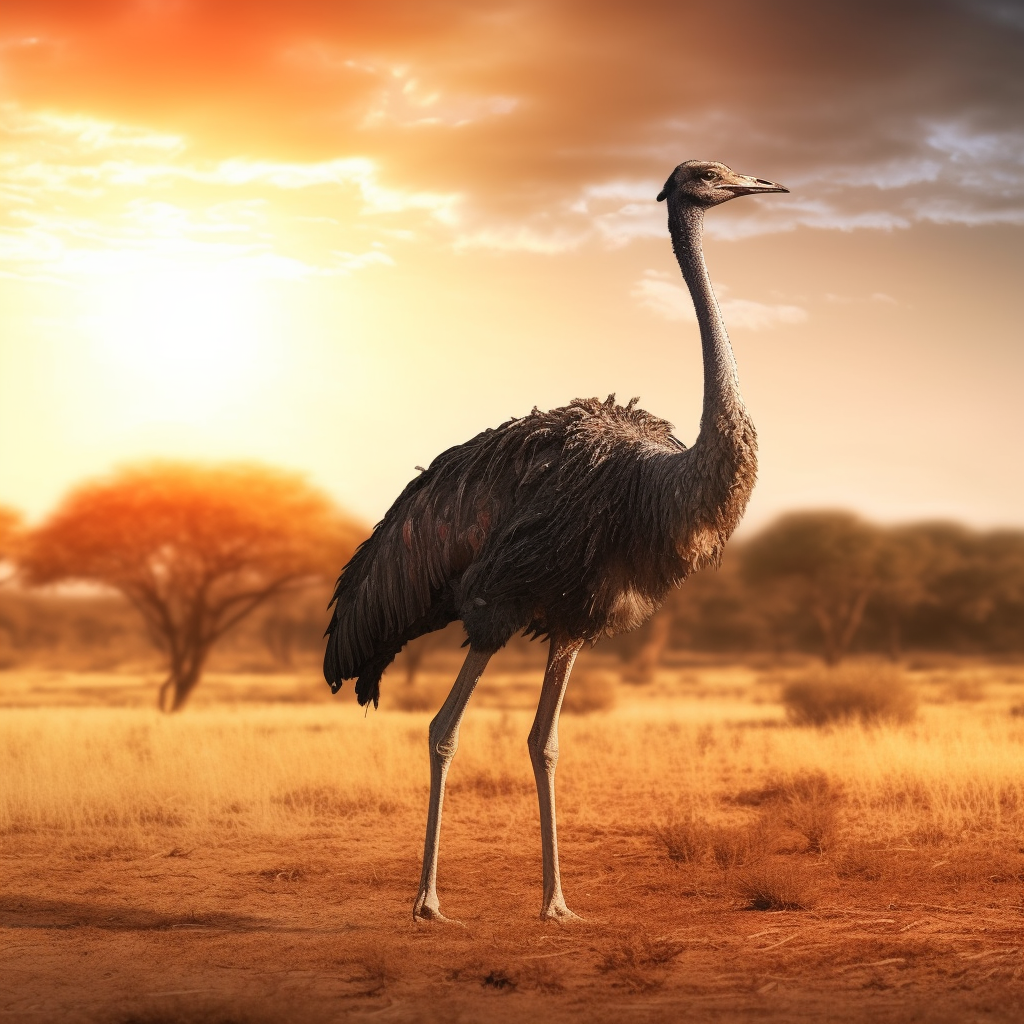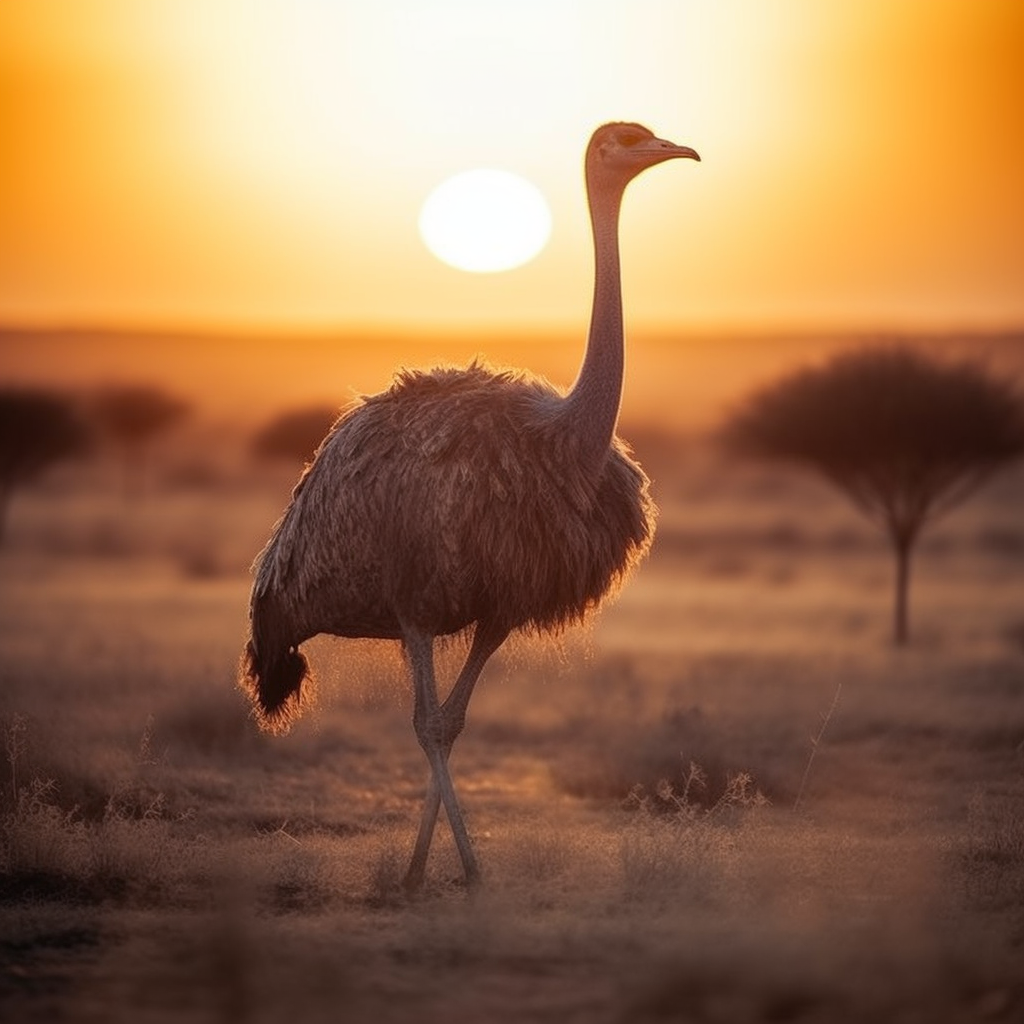Ostriches, the largest living birds on Earth, have a fascinating reproductive process. These flightless birds belong to the ratite family and are known for their incredible speed and unique physical characteristics. In this article, we will explore how ostriches reproduce, from courtship and mating rituals to egg-laying and incubation. Understanding the reproductive behavior of these magnificent creatures sheds light on their survival strategies and the wonders of nature. So, let’s dive into the world of ostrich reproduction and discover the remarkable journey these birds undertake to bring new life into the world.
Key Takeaways
- Ostriches reproduce through sexual reproduction.
- Mating season for ostriches occurs during the rainy season.
- Male ostriches perform elaborate courtship displays to attract females.
- Female ostriches lay their eggs in a communal nest.
- The dominant female and male ostriches take turns incubating the eggs.
- Ostriches have the largest eggs of any bird species.
- The incubation period for ostrich eggs is around 35-45 days.
- Ostrich chicks are precocial and can walk and feed themselves shortly after hatching. Understanding Ostriches: An Overview
Ostriches are fascinating creatures known for their incredible size and unique characteristics. In this section, we will explore two key aspects of ostriches: their height and growth rate.
A. How Tall Do Ostriches Grow?
When it comes to height, ostriches are truly remarkable. They are the tallest birds in the world, with adult males reaching an average height of 7 to 9 feet (2.1 to 2.7 meters). The females, although slightly smaller, still stand tall at around 6 to 7 feet (1.8 to 2.1 meters). Just imagine encountering a bird that towers over most humans!
The impressive height of ostriches is mainly due to their long legs. These powerful limbs enable them to run at incredible speeds, reaching up to 40 miles per hour (64 kilometers per hour). Their long legs also help them navigate their natural habitats, which consist of open grasslands and semi-arid regions.
B. How Fast Do Ostriches Grow?
Ostriches grow at a relatively rapid pace, especially during their early years. As hatchlings, they are incredibly small, weighing only about 2 to 3 pounds (0.9 to 1.4 kilograms). However, within the first year, they can grow to an impressive size of around 5 to 6 feet (1.5 to 1.8 meters) tall.
During their growth phase, ostriches experience significant changes in their appearance. Their feathers transform from soft and fluffy to strong and durable, providing them with the protection they need as adults. These feathers also play a crucial role in the mating process, as males use them to attract females during courtship rituals.
In addition to their physical growth, ostriches also reach sexual maturity at a relatively young age. By the time they are around 2 to 4 years old, they are ready to engage in the mating process and contribute to the reproduction cycle.
Understanding the height and growth rate of ostriches gives us a glimpse into their remarkable nature. These magnificent birds continue to captivate us with their unique characteristics and behaviors. In the next sections, we will delve deeper into the fascinating world of ostrich reproduction, exploring their mating habits, egg laying, and parental care. So, let’s dive in and discover the wonders of ostrich reproduction!
The Intricacies of Ostrich Reproduction

Ostriches, the largest living birds on Earth, have a fascinating reproductive process that involves both males and females. Let’s delve into the intricacies of how ostriches reproduce.
A. Do Ostriches Reproduce Sexually or Asexually?
Ostriches reproduce sexually, meaning they require both a male and a female to produce offspring. Unlike some organisms that can reproduce asexually, ostriches rely on the union of sperm and egg to create new life.
B. How Do Ostriches Mate?
The mating process of ostriches is quite unique. Male ostriches, known as cocks, engage in elaborate courtship rituals to attract females, called hens. These rituals involve the male fluffing up his feathers, spreading his wings, and performing a dance-like display. The male also emits low-frequency booming sounds to capture the attention of the females.
Once a female is enticed by a male’s display, she will crouch down on the ground, signaling her readiness to mate. The male then mounts the female from behind, placing his cloaca (a multi-purpose opening for reproduction and excretion) over the female’s cloaca to transfer sperm. This process is relatively quick and lasts only a few seconds.
C. When Do Ostriches Mate?
Ostriches typically mate during the breeding season, which varies depending on the region and environmental conditions. In general, the breeding season for ostriches occurs during the cooler months, as this provides a more favorable environment for egg incubation and chick rearing.
During the breeding season, males establish territories and compete with each other for access to females. They may engage in aggressive displays, such as neck wrestling and kicking, to establish dominance and secure mating opportunities.
D. Can Male Ostriches Lay Eggs?
No, male ostriches cannot lay eggs. Only female ostriches have the ability to lay eggs. After mating, the female will find a suitable nesting site where she will lay her eggs. Ostrich eggs are the largest of any bird species, weighing around 1.4 kilograms (3 pounds) on average.
The female ostrich will lay her eggs in a shallow nest she digs in the ground. She may lay up to 11 eggs over a period of a few weeks. Once all the eggs are laid, the female will carefully arrange them in the nest, using her beak to turn them regularly for even incubation.
It is worth noting that male ostriches play a crucial role in the reproductive process. After the female has laid her eggs, the male takes on the responsibility of incubating them during the day, using his large body to provide warmth and protection. This unique behavior is known as male incubation.
In conclusion, ostrich reproduction is a complex and fascinating process. From the elaborate courtship rituals to the male’s involvement in incubation, ostriches showcase unique behaviors that contribute to the survival and growth of their species. Understanding these intricacies allows us to appreciate the wonders of nature and the diversity of reproductive strategies found in the animal kingdom.
The Breeding Process of Ostriches

Ostriches are fascinating creatures, known for their impressive size and unique characteristics. When it comes to reproduction, ostriches have their own distinct breeding process. Let’s take a closer look at how these magnificent birds reproduce.
A. How to Breed Ostriches?
Breeding ostriches can be a complex process that requires careful planning and attention to detail. Ostriches are known for their selective mating behavior, where one male ostrich will mate with multiple females in a breeding season. This behavior is often observed in the wild as well as in ostrich farming.
To initiate the breeding process, ostrich farmers typically provide a suitable nesting area for the ostriches. This nesting area should be spacious enough to accommodate the large size of the birds and should offer protection from predators. Ostriches are known to be protective of their eggs, so it is important to create a safe and secure environment for them.
B. How Often Do Ostriches Breed?
Ostriches have a specific breeding season, which varies depending on their geographical location. In the wild, ostriches typically breed during the rainy season when food and water are abundant. In captivity, ostriches can be bred throughout the year, but farmers often prefer to follow the natural breeding season to ensure the best results.
During the breeding season, male ostriches display elaborate courtship rituals to attract females. These rituals involve dancing, feather displays, and booming calls. The male ostriches compete with each other to establish dominance and win the attention of the females.
C. How Do Ostriches Lay Eggs?
Once the male ostrich has successfully mated with a female, the female will lay her eggs in a carefully selected nest. Ostriches are known for their large eggs, which are the largest of any bird species. These eggs are typically white in color and have a thick, hard shell to protect the developing embryo.
The female ostrich will lay her eggs over a period of several days, usually laying one egg every two days. The average clutch size can range from 10 to 60 eggs, with each egg weighing around 1.4 kilograms (3 pounds). The female ostrich takes great care in arranging the eggs in the nest, ensuring they are well-positioned for incubation.
D. How Long Do Ostriches Lay Eggs?
After the female ostrich has laid all her eggs, the incubation period begins. Ostrich eggs have a relatively long incubation period, lasting approximately 35 to 45 days. During this time, the male and female ostriches take turns incubating the eggs, with the male taking the night shift and the female taking the day shift.
Incubation is a crucial stage in the breeding process, as it allows the embryos to develop and eventually hatch into ostrich chicks. The male and female ostriches work together to maintain the temperature and humidity levels in the nest, ensuring optimal conditions for the eggs to hatch.
In conclusion, the breeding process of ostriches is a fascinating and intricate journey. From the selective mating behavior to the careful arrangement of eggs in the nest, ostriches exhibit remarkable reproductive strategies. Understanding the breeding process of ostriches not only provides insight into their unique biology but also highlights the importance of conservation efforts to protect these magnificent birds.
The Life Cycle of Ostrich Offspring

Ostriches, the largest birds in the world, have a fascinating life cycle when it comes to reproducing and raising their young. Let’s take a closer look at how ostriches go through the process of laying eggs, hatching chicks, and caring for their offspring.
A. How Many Times Do Ostriches Lay Eggs?
Ostriches are known for their impressive egg-laying abilities. Female ostriches typically lay eggs during the breeding season, which can occur between March and September, depending on the region. During this time, female ostriches may lay a clutch of eggs, which refers to a group of eggs laid in a single nesting attempt.
On average, female ostriches lay around 7 to 10 eggs in a clutch, although the number can vary. Each egg is large, weighing about 1.4 kilograms (3 pounds), and is the largest of any bird species. Ostrich eggs are also known for their thick and hard shells, which help protect the developing embryos inside.
B. How Many Babies Do Ostriches Have at a Time?
Once the female ostrich has laid her clutch of eggs, the incubation period begins. Ostrich eggs have a long incubation period of approximately 35 to 45 days. During this time, the male ostrich takes on the responsibility of incubating the eggs.
Male ostriches are known for their exceptional parenting skills. They carefully tend to the eggs, using their large and muscular legs to rotate them throughout the day. This rotation helps ensure that the embryos receive equal heat distribution, increasing the chances of successful hatching.
C. How Many Babies Do Ostriches Have?
After the incubation period, the eggs start to hatch, and adorable ostrich chicks emerge. Ostriches have one of the highest hatching success rates among birds, with around 80% of the eggs successfully hatching.
When the chicks hatch, they are already quite large and covered in soft down feathers. They are capable of walking and even running within hours of hatching. The male ostrich continues to play a crucial role in their care, protecting them from predators and teaching them essential survival skills.
Ostriches generally have a high level of parental care. The male and female ostriches work together to raise their chicks, with the male taking the lead in guarding and defending the young ones. The chicks stay close to their parents for several months, gradually becoming more independent as they grow.
In conclusion, the life cycle of ostrich offspring is a remarkable journey. From the female laying a clutch of large eggs to the male diligently incubating them and the hatching of adorable chicks, ostriches exhibit fascinating reproductive behavior. Their high hatching success rate and strong parental care contribute to the survival and growth of their offspring. Conclusion
In conclusion, ostriches have a unique and fascinating reproductive process. The males engage in elaborate courtship displays to attract females, who then choose their mates based on these displays. Once a pair has formed, they will engage in a mating ritual that involves the male circling the female and eventually mounting her. The female will then lay her eggs in a communal nest, which is typically a shallow hole in the ground. Both the male and female take turns incubating the eggs, with the male taking the night shift and the female taking the day shift. After about 42 days, the eggs will hatch, and the chicks will emerge. These chicks are precocial, meaning they are able to walk and feed themselves shortly after hatching. Ostrich reproduction is a remarkable process that showcases the unique adaptations of these incredible birds.
Frequently Asked Questions
How to breed ostriches?
Breeding ostriches requires a careful understanding of their mating behavior and breeding season. The process typically involves a male ostrich performing a courtship ritual, which includes a unique mating call, to attract a female. Once the female accepts, they mate. The female ostrich then lays eggs in a communal nest made by the male, which both parents will take turns incubating.
How do ostriches mate?
Ostriches mate following a courtship ritual performed by the male. This includes a special dance and a distinctive mating call. If the female is receptive, she will sit on the ground and the male will mount her for copulation.
How many times do ostriches lay eggs?
A female ostrich can lay anywhere between 12 to 60 eggs per year, depending on her health and the environmental conditions. The egg-laying often takes place during the breeding season.
How long do ostriches lay eggs?
The egg-laying period for ostriches typically lasts for several weeks during the breeding season. Each egg, which is the largest of any living bird species, takes about 36-48 hours to be laid after the previous one.
Can male ostriches lay eggs?
No, male ostriches cannot lay eggs. Only female ostriches have the reproductive system necessary for egg production. However, male ostriches play a vital role in the incubation process and parental care.
When do ostriches mate?
Ostriches mate during the breeding season, which can vary depending on the region but typically occurs during the warmer months. The male will perform a courtship ritual to attract a female, and if she is receptive, they will mate.
How many babies do ostriches have at a time?
A female ostrich typically lays one egg at a time, but the nest can contain eggs from several females, as ostriches breed communally. Each egg, once hatched, results in one ostrich chick.
Do ostriches reproduce sexually or asexually?
Ostriches reproduce sexually. The process involves a male ostrich fertilizing the eggs of a female ostrich through mating.
How often do ostriches breed?
Ostriches typically breed once a year during the breeding season. However, the frequency can depend on various factors such as the health of the ostriches, their age, and the environmental conditions.
How do ostriches lay eggs?
Female ostriches lay their eggs in a communal nest made by the male. Each egg is laid approximately 36-48 hours apart. Both the male and female ostrich take turns to incubate the eggs.




